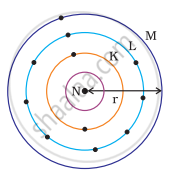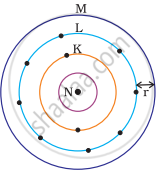Advertisements
Advertisements
Question
Arrange the following in order of increasing radii:
Mg2+, Mg, Mg+
Explain your choice.
Solution
Mg2+< Mg+< Mg
Explanation:
Cation is smaller in size than its parent atom.
RELATED QUESTIONS
Why is the size of neon greater than fluorine?
Write the name and symbol of the element from the description.
The noble gas with the smallest atomic radius.
The following questions refer to the Periodic Table.
What happens to the atomic size of elements moving from top to bottom of a group?
An element X has mass number 40 and contains 21 neutrons in its atom. To which group of the Periodic Table does it belong?
Which of the following is the correct order of size?
Which among the following elements has the largest atomic radii?
Which one of the following depict the correct representation of atomic radius(r) of an atom?
|
(i) |
(ii) |
|
(iii) |
(iv) |
- Electropositive nature of the element(s) increases down the group and decreases across the period
- Electronegativity of the element decreases down the group and increases across the period
- Atomic size increases down the group and decreases across a period (left to right)
- Metallic character increases down the group and decreases across a period.
On the basis of the above trends of the Periodic Table, answer the following about the elements with atomic numbers 3 to 9.
- Name the most electropositive element among them
- Name the most electronegative element
- Name the element with smallest atomic size
- Name the element which is a metalloid
- Name the element which shows maximum valency.
Arrange the following as per the instruction given in the bracket:
Carbon, Fluorine, Beryllium (decreasing order of atomic size).
Which one has the largest size?




